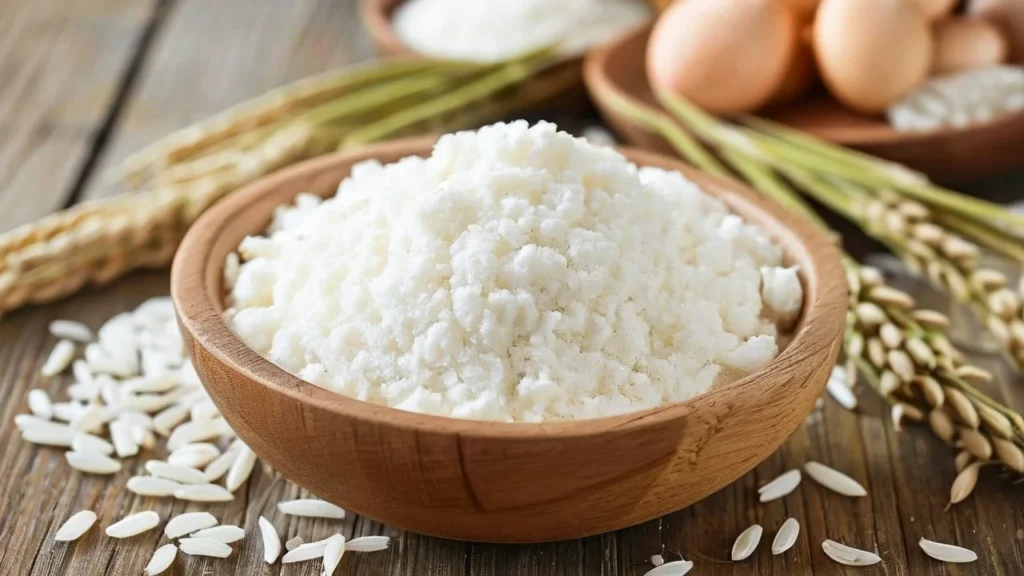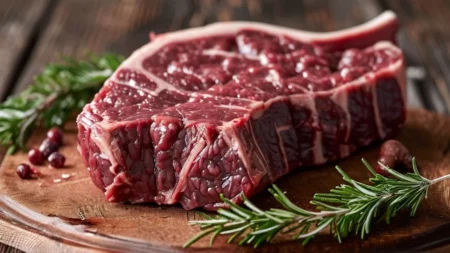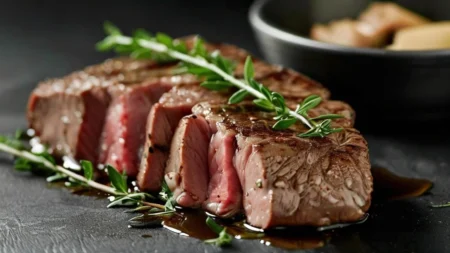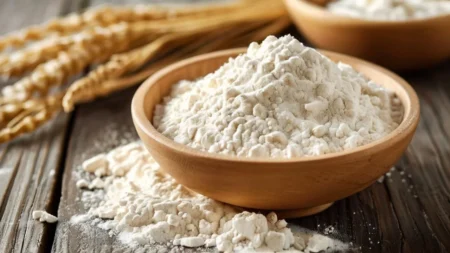White Rice Flour: A Versatile Gluten-Free Alternative
Key Takeaways
- White rice flour is a gluten-free flour made from finely milled white rice, suitable for various dietary needs.
- It is commonly used in Asian cuisines and as a thickening agent in sauces, soups, and gravies.
- Rich in carbohydrates, it serves as a good energy source but is lower in protein and fiber than whole grain flours.
- White rice flour can be used in a variety of recipes, including gluten-free baked goods, pancakes, and noodles.

What is White Rice Flour?
White rice flour is a finely milled flour made from white rice, a staple food in many cultures worldwide. It is gluten-free, making it an excellent alternative for individuals with celiac disease or gluten intolerance. This flour is commonly used in Asian cuisines, particularly in recipes for rice cakes, dumplings, and noodles.
Nutritional Profile of White Rice Flour
While white rice flour is versatile and widely used, it’s important to understand its nutritional content. It provides energy primarily from carbohydrates, but it lacks some of the essential nutrients found in whole grain flours.
Table 1: Nutritional Profile of White Rice Flour (per 100g)
| Nutrient | Amount | % Daily Value (DV) |
|---|---|---|
| Calories | 366 | – |
| Protein | 6.0 g | 12% |
| Total Fat | 1.2 g | 2% |
| Saturated Fat | 0.3 g | 1% |
| Carbohydrates | 80 g | 27% |
| Fiber | 2.0 g | 8% |
| Iron | 0.4 mg | 2% |
| Calcium | 18 mg | 2% |
| Magnesium | 25 mg | 6% |
Health Benefits of White Rice Flour
Gluten-Free Option
White rice flour is naturally gluten-free, making it suitable for people with gluten sensitivities or celiac disease. It can be used in various recipes to provide texture and structure without the adverse effects associated with gluten.
Good Source of Energy
As a high-carbohydrate food, white rice flour provides a quick source of energy. It can be particularly beneficial for athletes or active individuals who require readily available energy.
Easy to Digest
White rice flour is easy to digest, making it an excellent choice for individuals with sensitive stomachs or digestive disorders. Its mild flavor and fine texture allow it to be incorporated into various dishes without altering their taste significantly.
Culinary Uses of White Rice Flour
White rice flour is incredibly versatile and can be used in numerous culinary applications. Its unique properties make it a preferred choice for gluten-free baking and cooking.
List: Common Uses of White Rice Flour
- Gluten-Free Baking: White rice flour can be used to make gluten-free bread, muffins, and cookies.
- Thickening Agent: It works well as a thickener for sauces, gravies, soups, and puddings.
- Noodles and Dumplings: Used in Asian cuisines to make rice noodles and dumplings like mochi.
- Pancakes and Waffles: Can be used to create light and fluffy gluten-free pancakes and waffles.
- Breading and Coating: It can be used to coat meats and vegetables for frying or baking.
White Rice Flour vs. Other Gluten-Free Flours
When it comes to gluten-free baking, various flour alternatives are available. Understanding the differences between white rice flour and other gluten-free flours can help you choose the right one for your recipes.
Table 2: Comparison of Common Gluten-Free Flours (per 100g)
| Flour Type | Calories | Protein | Carbohydrates | Fiber | Gluten-Free |
|---|---|---|---|---|---|
| White Rice Flour | 366 | 6.0 g | 80 g | 2.0 g | Yes |
| Almond Flour | 575 | 21 g | 20 g | 10 g | Yes |
| Coconut Flour | 400 | 20 g | 60 g | 37 g | Yes |
| Oat Flour | 389 | 13 g | 66 g | 7 g | Yes (if certified gluten-free) |
Cooking Tips for Using White Rice Flour
When using white rice flour in your cooking or baking, consider these tips to achieve the best results:
- Combine with Other Flours: White rice flour can be blended with other gluten-free flours (like almond or coconut flour) to enhance flavor and texture in baked goods.
- Adjust Liquid Content: When using white rice flour in recipes, you may need to adjust the liquid content, as it absorbs moisture differently than wheat flour.
- Use as a Thickener: To avoid lumps, mix white rice flour with a small amount of cold liquid before adding it to hot mixtures as a thickening agent.
- Store Properly: Keep white rice flour in an airtight container in a cool, dry place to prevent it from absorbing moisture and clumping.
Potential Drawbacks of White Rice Flour
While white rice flour offers numerous benefits, it does have some drawbacks to consider:
- Lower Nutrient Density: Compared to whole grain flours, white rice flour is lower in protein, fiber, and essential vitamins and minerals.
- High Glycemic Index: White rice flour has a higher glycemic index than whole grain flours, which means it can cause rapid spikes in blood sugar levels. Individuals with diabetes should use it cautiously.
Conclusion
White rice flour is a versatile gluten-free flour that serves as an excellent alternative to wheat flour in various recipes. It is easy to digest, provides a good source of energy, and can be used in a wide range of culinary applications, from baking to thickening sauces. While it may not offer the same nutritional benefits as whole grain flours, its unique properties make it a valuable ingredient for those with gluten sensitivities or anyone seeking to diversify their diet. By understanding how to use white rice flour effectively, you can enhance your cooking and baking repertoire while accommodating various dietary needs.
FAQ
1. Is white rice flour gluten-free?
Yes, white rice flour is naturally gluten-free and is a suitable alternative for individuals with celiac disease or gluten intolerance.
2. Can I substitute white rice flour for all-purpose flour in recipes?
Yes, but adjustments may be needed in the recipe, such as modifying liquid content or combining it with other gluten-free flours for better texture.
3. What are some recipes that use white rice flour?
White rice flour is commonly used in gluten-free bread, pancakes, rice noodles, dumplings, and as a thickening agent for sauces.
4. How should I store white rice flour?
Store white rice flour in an airtight container in a cool, dry place to prevent moisture absorption and clumping.
5. Is white rice flour suitable for people with diabetes?
Individuals with diabetes should use white rice flour cautiously due to its higher glycemic index, which can cause rapid spikes in blood sugar levels.










